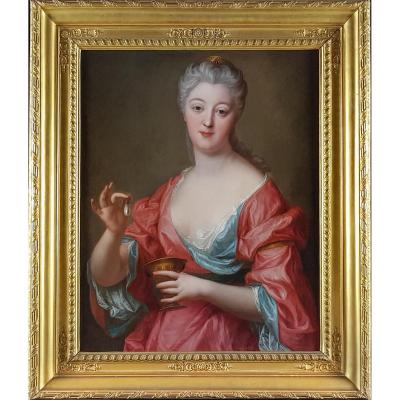"Portrait Of A Lady As Cleopatra Dissolving A Pearl C1755; Attrib To Marianne Loir (c.1715-1769)"
This work is a particularly fine example of the category of allegorical portraiture as practiced in the middle of the eighteenth century in France. The woman has been depicted as Queen Cleopatra and references the account of her legendary wager with the Roman general Mark Antony and a legendary episode of a wager between the two lovers, who vied with each other to stage the most sumptuous banquet. After an extremely lavish meal at Mark Antony’s expense, Cleopatra boasted that she could lay a banquet of much greater extravagance. On her ears she was wearing two enormous pearls — the two largest pearls in the world, left to her by oriental kings of the East. She removed one of them, dropped it into a single vessel containing an acidic substance mixed with wine and when it was dissolved she drank it - an extravagant gesture of seduction – and so it was declared that she wins the wager. The account was first recorded by Pliny the Elder in his
‘Naturalis Historia’ written in 77 A.D. (IX.59.119-121; also Macrobius, Saturnalia, III.17.14-17). From Pliny's own words: “When Antony had been sated by her, day after day, with the most exquisite banquets, this queenly courtesan, inflated with vanity and disdainful arrogance, affected to treat all this sumptuousness and all these vast preparations with the greatest contempt; upon which Antony enquired what there was that could possibly be added to such extraordinary magnificence. To this she made answer, that on a single entertainment she would expend ten million of sesterces [around 30 million dollars today] at one dinner. Antony was extremely desirous to learn how that could be done, but looked upon it as a thing quite impossible; and a wager was the result”. Throughout the centuries, the story was described by many other writers, in plays and poems, and was also memorialised in numerous paintings. It was a particularly popular subject in the early modern period, 16th century to 19th century and in allegory it could allude to the reckless extravagance, decadence, arrogance, profligacy, etc of mankind.
Although many middle and upper-class woman in the 18th century had access to learning and education, without comparable professional, political or military roles through which they could be publicly identified, they were more easily transformed into seductive allegorical images than their male counterparts. Moreover, some of these allegorical meanings might be carefully veiled, and function on more than one level at once. Allegory has been used widely throughout the histories of all forms of art; a major reason for this is its immense power to illustrate complex ideas and concepts in ways that are easily digestible and tangible to its viewers, readers, or listeners.
There is a virtuoso handling of the paint and the feminity and tenderness of this work is sublime. Marianne Loir was largely influenced by Jean Marc Nattier and this is visible in our portrait in the classical costume, the soft colouring, the pink and blue pallette, and the subject itself. In fact, it is thought that Loir’s work is regularly misattributed to that of Jean Marc Nattier. Held in its original good quality gilt frame.
Marianne Loir was a French painter born in Paris and was an extremely skillful painter of portraits of the nobility and intelligentsia, and they are characterised by a delicate, refined manner and elegant color schemes. Loir’s family provided her with an impressive artistic pedigree. The Loirs had been active Parisian silversmiths since the 17th century. She was the daughter of the Parisian painter and engraver Nicolas Loir (1624-1779) and sister of the highly regarded pastellist and sculptor Alexis III Loir (1712-1785) who also specialised in portraiture. Marianne studied under Jean-François de Troy (1679-1752) who was director of the French Academy in Rome and she was also a member of the French Academy there (where she stayed between 1738 and 1746). She was then active in Paris between 1746-1760 (when the present portrait was painted) and in 1762 she was a member of the Academy of Fine Arts in Marseille.
Provenance: French Private collection
Measurements: Height 107cm, Width 91cm framed (Height 42”, Width 35.75” framed)




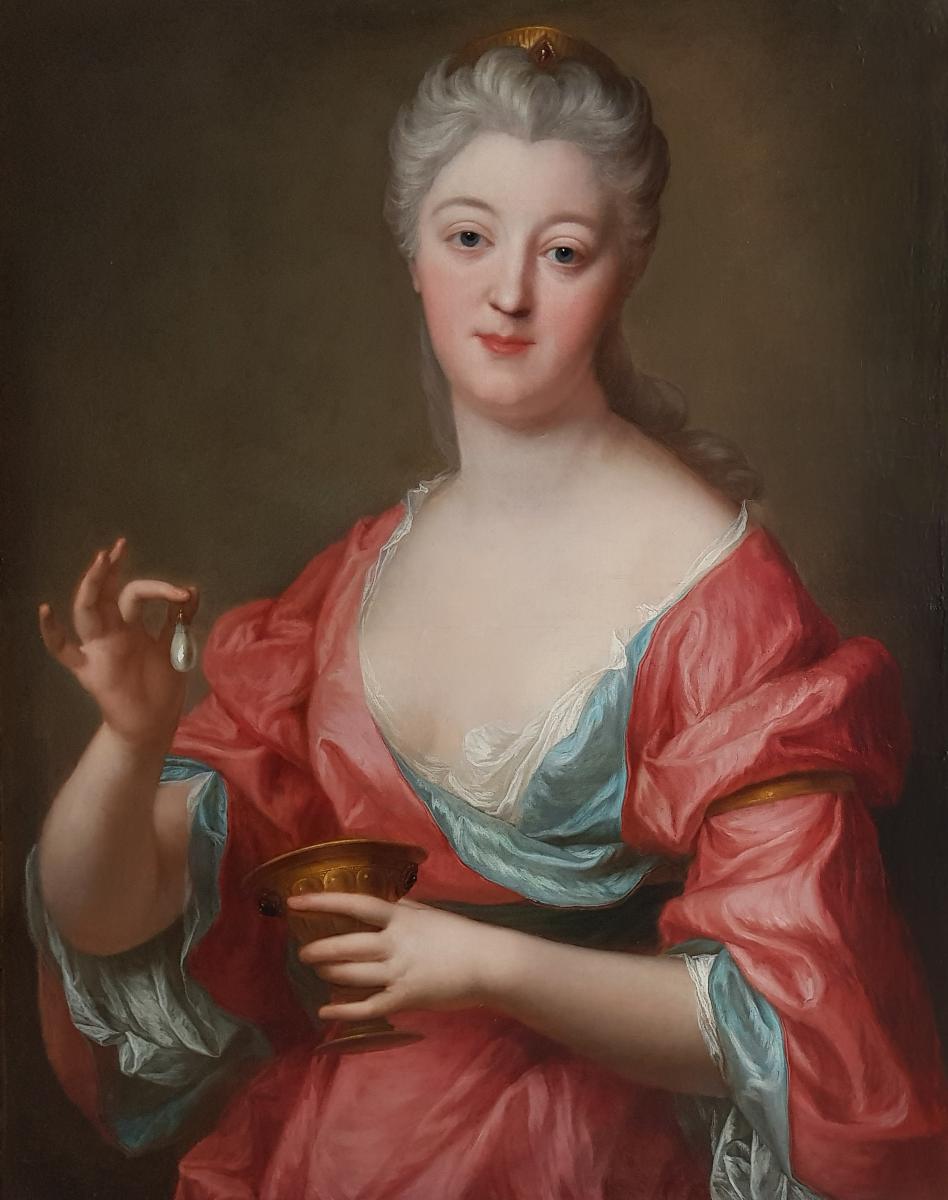
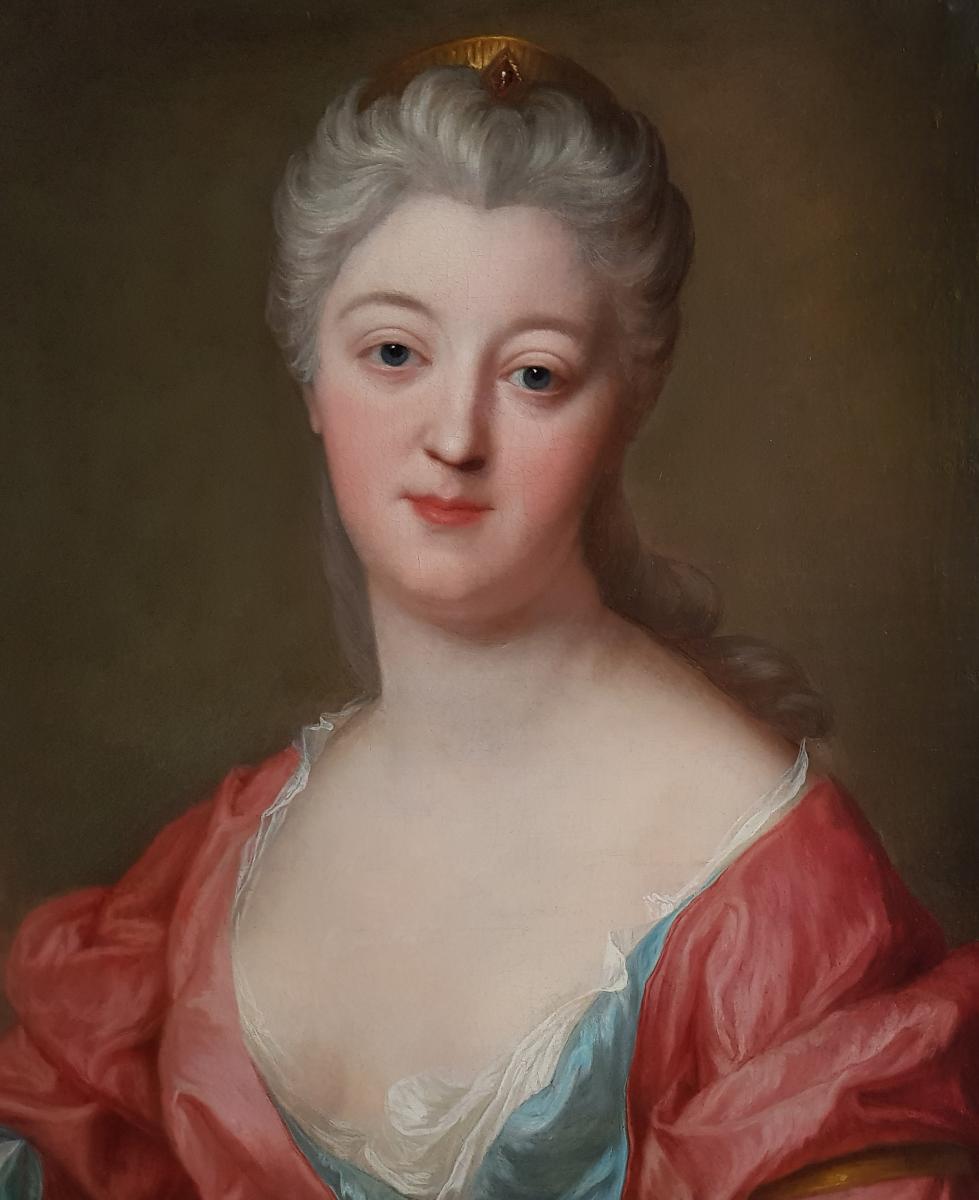
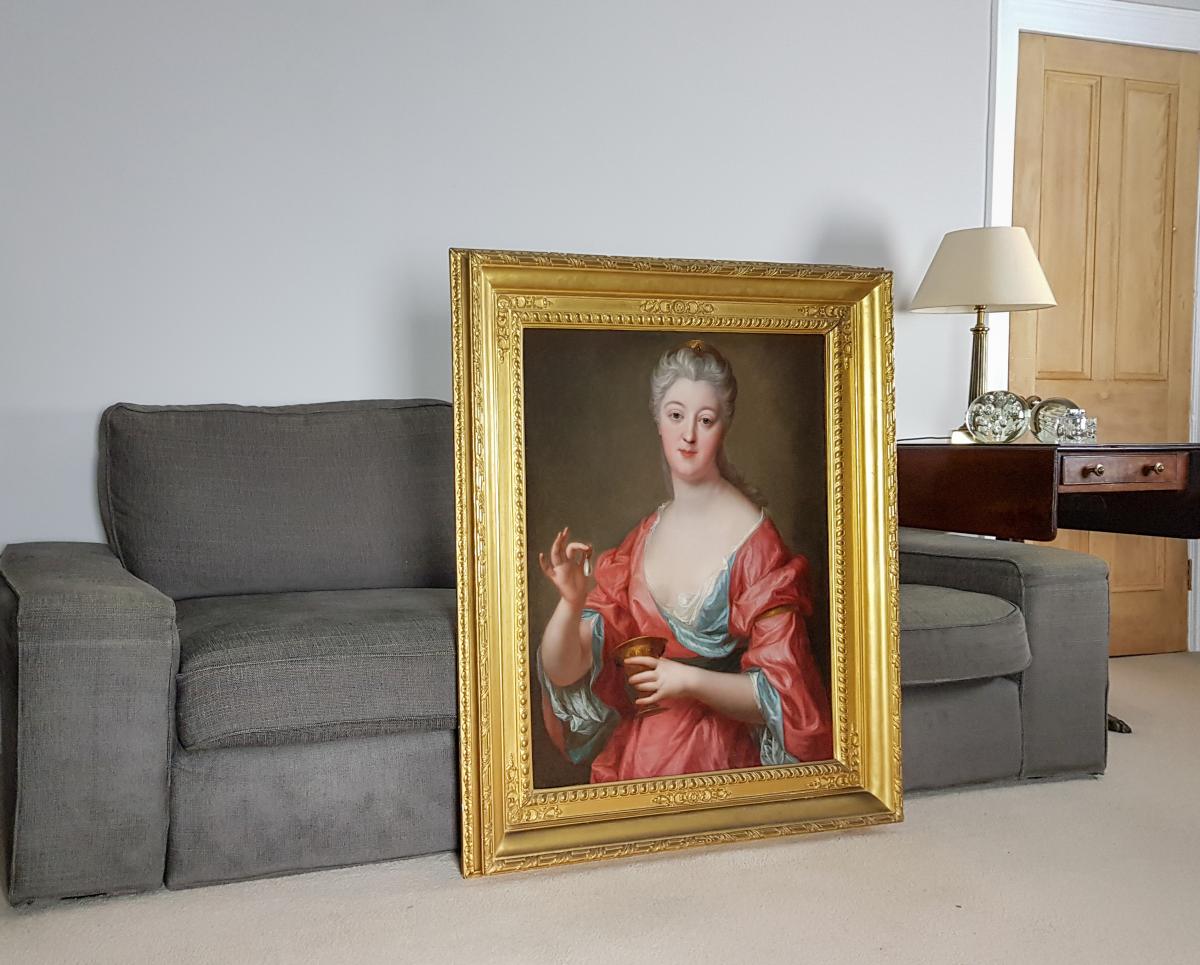

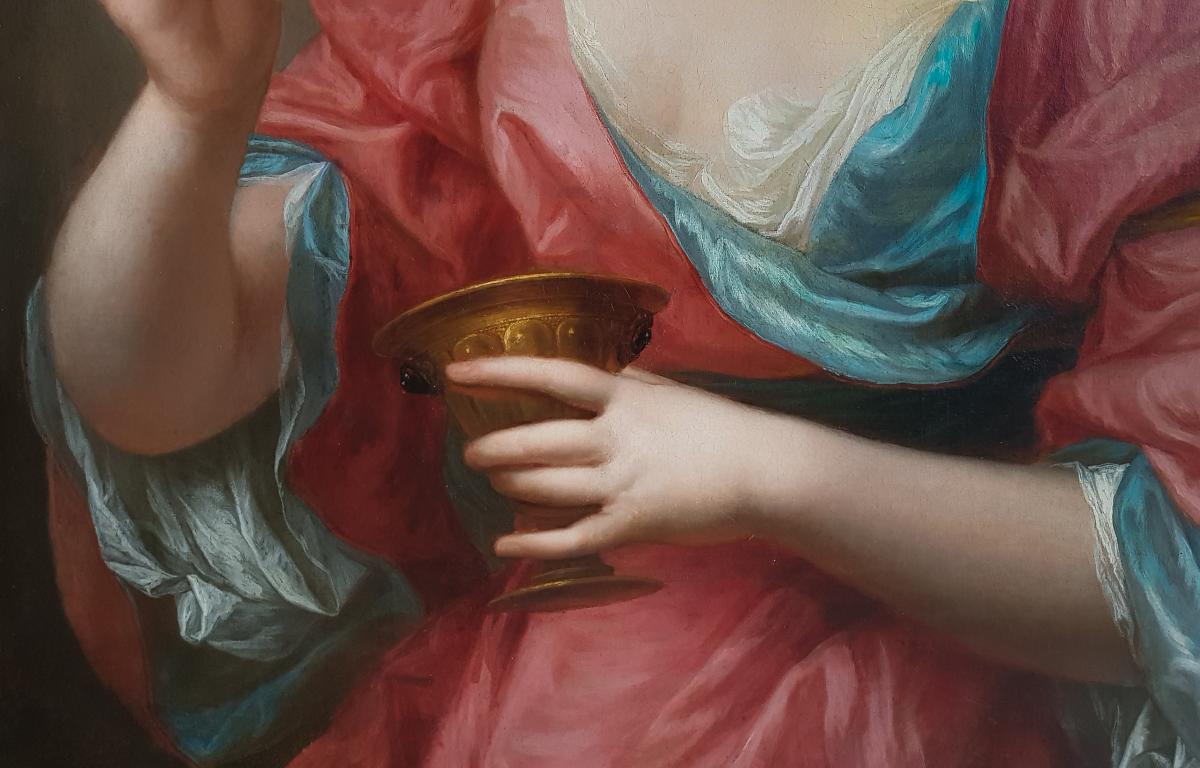
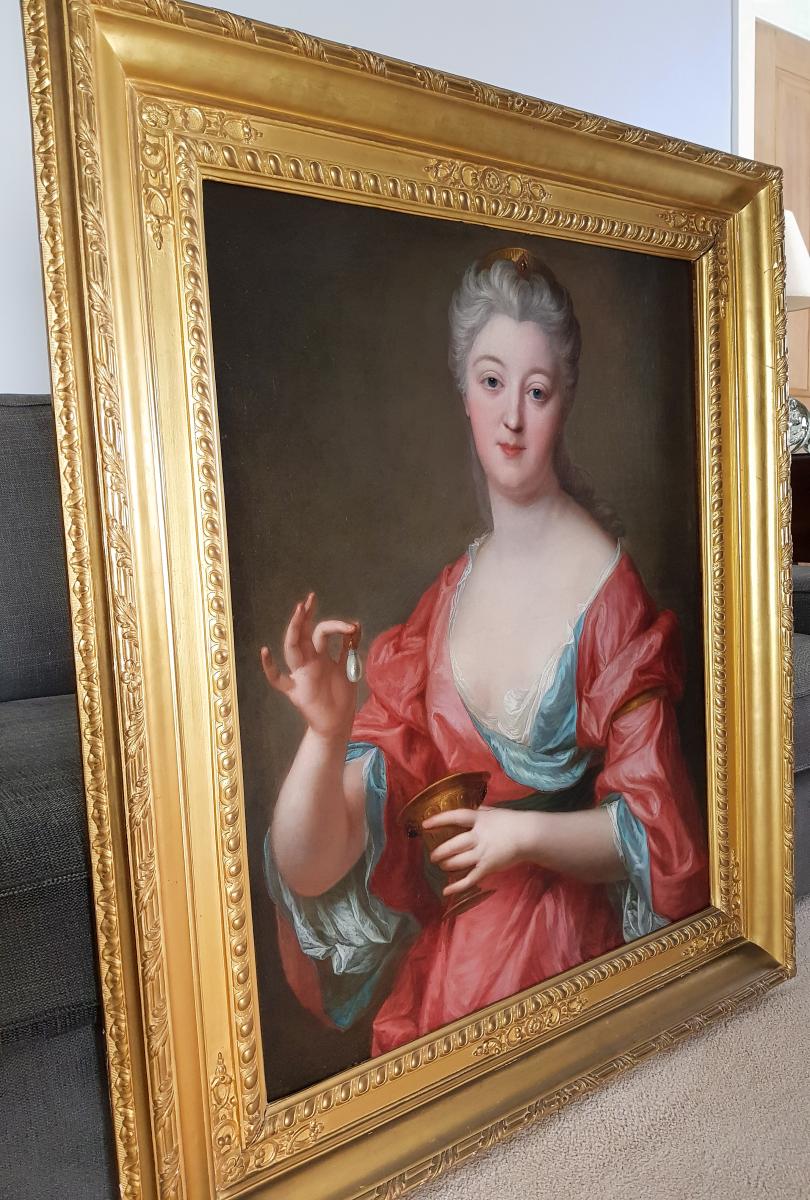
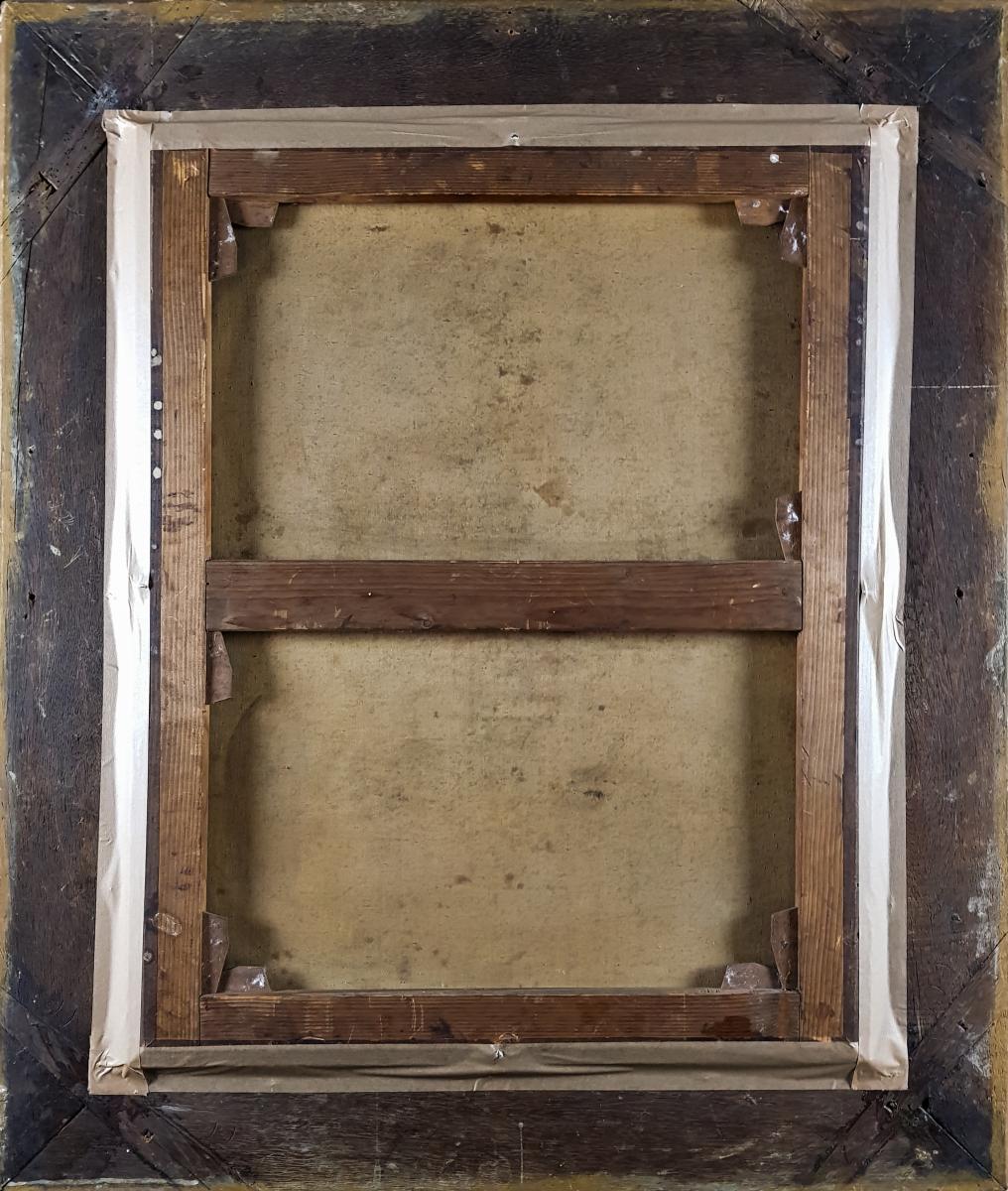

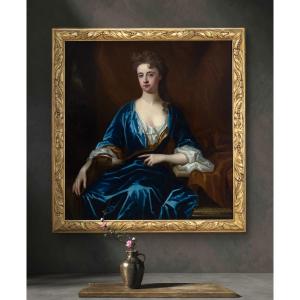

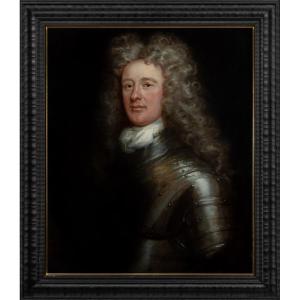

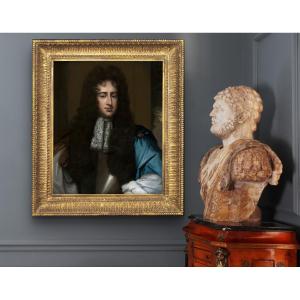


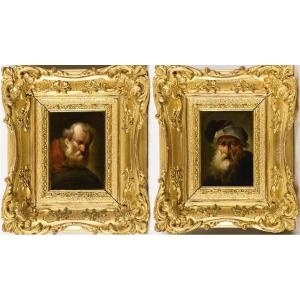
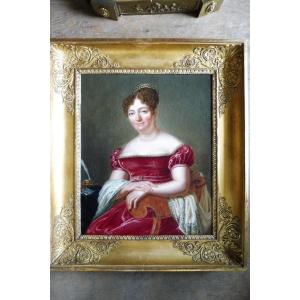

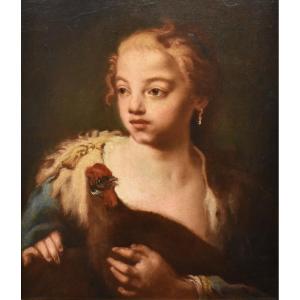



 Le Magazine de PROANTIC
Le Magazine de PROANTIC TRÉSORS Magazine
TRÉSORS Magazine Rivista Artiquariato
Rivista Artiquariato
